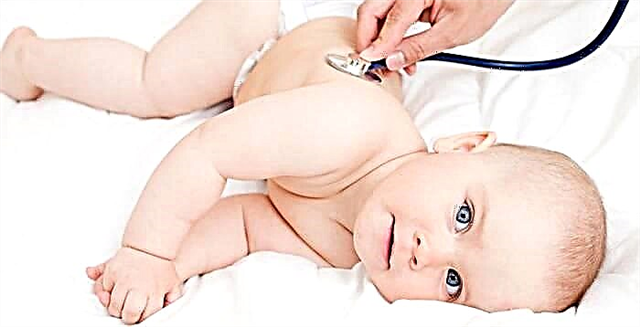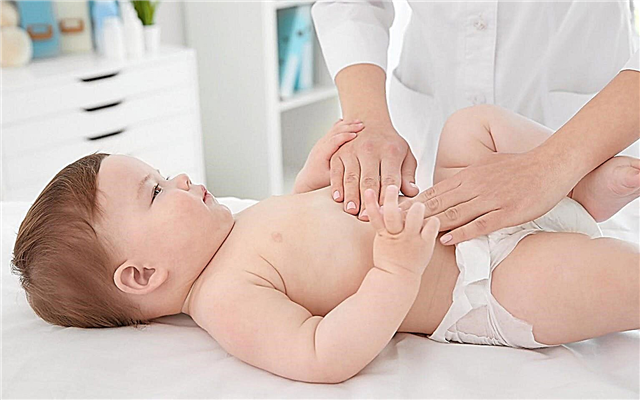The first trip to the clinic with a newborn is a difficult task. But we will simplify it for you. We will tell you when it is better to come to the doctor so as not to wait long for your turn. We also remind you that you need to take some things with you.

The kid grows very quickly. Only a month has passed since his birth, but the doctor no longer comes to the house himself. The time has come for the first trip to the clinic, and not just to the pediatrician, but for a whole medical examination (visiting several doctors). And such trips have to be made every month (monthly to the pediatrician and some specialists). Later, you will begin to feel confident in the clinic, already at home. But the first time can make you nervous. What do you need to consider? I'll tell you about this in detail.
Time of receipt
Sometimes the doctors themselves appoint the time of appointment. If you have a choice, then the following recommendations will be useful to you:
- Choose a time to go to the clinic so that it is between your baby's sleep periods. Then he will be already asleep, but not yet tired;
- If admission is based on coupons, sign up first or second. There are always fewer queues at the beginning of the day and you won't have to wait long;
- If you were only shown a time range that is common for everyone, then come in the middle of the appointment... Everyone will want to come to the beginning, and you will sit in line for a long time;
- Best time to visit is morning... No one wants to go straight from a warm bed to the clinic, so the queue is shorter in the morning;
- On some days, the pediatrician sees healthy children, and on others - sick children... If you do not want to come in vain and catch an infection, ask the receptionist in advance when healthy babies are being accepted;
- If there was a quarantine in the clinic, then immediately after it there will be many visitors and long lines. Therefore, if there is no special need, postpone the visit to the pediatrician for one or two weeks.
As a rule, a so-called infant day is established in each clinic. This is a day (for example, Tuesday) during which all doctors work only with children under one year old. There is no need to queue up for an appointment on a baby's day by electronic appointment - specialists accept patients on a first-come, first-served basis, but you need to know better in advance. Some doctors try to accept newborns earlier than other babies, but this is at the discretion of a specialist.
What to take
Before going to the clinic, put in your bag:
- Documents... For the first visit to the clinic, you will need your documents: passport and coupon number 3-1 of the birth certificate. A package of children's documents is a birth certificate of a child, a policy of compulsory medical insurance, an insurance certificate card of compulsory pension insurance (SNILS), a child's medical card (if you have it in your hands), a certificate of preventive vaccinations made, the results of examination and analyzes (if they were held). To prevent the documents from wrinkling or getting dirty, purchase a plastic envelope folder with a zipper or a button at a stationery store;
- Diapers... You will need 2 of them for the pediatrician, and one for the rest of the doctors. But it is better to take one more spare: children sometimes pee directly at them (suddenly it happens to you). Best taken from flannel. The chintz is too thin and the jersey curls around the edges. The optimal size is 80x80 (10 cm more or less). Such nappies fit perfectly on the changing table and do not take up much space in the bag.
- Toys / rattle... Take new ones or old ones that the child has already forgotten about. It is enough to hide 2–3 pieces a couple of days before the visit to the doctor. They should be easy to wash, because in the clinic you can drop them on the floor more than once. Toys should also be interesting so that the kid does not get bored with them while waiting in line.
- Spare diapers... Take a couple of them (anything can happen).
- Wet wipes... Comments will be superfluous.
- Food and water... If you are breastfeeding, then your clothes should be comfortable for feeding (you can feed your baby in a healthy baby's room). For an artificial person, take a mixture, and if the child is older, then you can take food that you can eat without getting very dirty (banana, cookies, mashed potatoes with a dispenser).
- Spare clothes... The diaper sometimes leaks and babies spit up and get dirty when they eat. Therefore, spare clothes can be very helpful.
- Shoe covers... Usually they are given free of charge at the entrance. But what if there are no shoe covers in your clinic?
- Questions written in a notebook... Write down everything you want to ask your doctor in advance. Do not even try to remember: as soon as you step through the threshold of the office, you will immediately forget everything.
- Notepad and pen. They are needed to record important points (height and weight of the child, doctor's recommendations, time of the next appointment, etc.).
If the baby is sucking on a pacifier, fasten it to clothes using a special chain (so that it does not fall) and take a couple of clean ones in reserve.
Watch the video: List of things to take with you to your child's doctor appointment
Medical examination
- In the polyclinic, the pediatrician asks the mother questions and examines the baby;
- Undresses the newborn, listens to the heart and lungs. This is possible even if the baby is crying;
- Measures the circumference of the head and chest, height, weighs the baby;
- Palpates the abdomen (it may be swollen);
- Listens to heart murmurs;
- Spreads the hip joints;
- He looks to see if the baby fixes his gaze, reacts to sound;
- Assesses the condition of the skin and mucous membranes of the mouth (is there a white coating on the tongue);
- Tracks neurological symptoms (or their dynamics, if something was found in the patronage) - increased or decreased muscle tone, shaking hands or chin in a calm state, posture during sleep;
- Examines the baby for congenital pathology;
- Asks mom about feeding regimen and stool frequency
What to wear for a child
Think about what the baby will wear in the clinic, so that he will be comfortable. Dress your child according to the season and the weather, of course, adhering to the principle of "multiple layers". Please note that the clinic can be cool or, conversely, hot and stuffy. You should be able to adjust the amount of clothing so that your baby does not get cold or sweaty. Do not get carried away with a large number of things, it is better to use a blanket, blanket or envelope as one of the layers.
In the doctor's office, you will completely undress your child for examination. And if you need to bypass several specialists, then the process of undressing / dressing will have to be repeated several times. To prevent this from becoming a real challenge for you or your baby, avoid clothes that need to be worn over the head, with many buttons and ties. Bodysuits and jumpsuits-sleepers, which open as much as possible and can be easily fastened with several buttons or a zipper, are what you need to quickly change your baby's clothes.
What to wear for mom
[sc name = ”rsa”]
The day is going to be troublesome, so wear light clothing and shoes that do not hinder your movements. If you are a breastfeeding mom, dress so that you have easy access to your breasts. Unfortunately, not every children's clinic has a special “mother and child” room. And where it is, not all women use it, fearing to miss the line. Therefore, most likely, you will have to feed the baby in the hallway. In special clothes for nursing, you can attach the baby to the breast without exposing the back and chest, and without attracting the attention of others. T-shirts, jumpers, dresses with hidden breast slits - in stores for expectant mothers and babies, you can choose an outfit for yourself for every taste. But even without such "overalls" you can adapt to feeding in public places. A blouse with buttons, a shirt worn on a T-shirt, a stole or a scarf draped over your shoulders - feed your baby calmly without prying eyes of strangers.
How to make your first visit to the clinic easier
It will be easier for you if:
- Another adult will go with you... He will sit in line while you go out for a walk with your child (or, conversely), will let you go to get a card, coupon or for other needs. It is inconvenient to carry your baby with you everywhere;
- The child's clothes will be multi-layered... The clinic may be hot or cold. Therefore, the clothes should be such that you can quickly take something off (or throw on);
- You will study in advance on the Internet the parameters that will be checked in the child. Read what is examined in the baby every month, why, and what are the norms of these parameters by age. It is easier for prepared mothers to understand the words and actions of the pediatrician, then you may have questions immediately at the reception, and not after you come home.
Our family has developed a scheme that allows us not to sit in line for a long time with the child: one of the relatives takes a queue for an appointment in advance, an hour before the appointment, and we with the children, having arrived an hour later, are most often the first to enter the office. Yes, you can sit for the same hour during the reception, but then there will be much more sick children, overwrought mothers who want to skip the line, etc.
In a hot and stuffy clinic, in a crowd of people, a child must be undressed immediately so that he does not sweat. A light cap that protects the baby from drafts will not hurt. Since there are always a lot of not quite healthy children in the clinic, it is better to lubricate the child's nasal passages with oxolinic ointment in advance.
Tune in to a philosophical attitude towards people trying to skip the line. This is an inevitable evil, it is very difficult to fight it. “I’m just a minute, just ask,” “I have to go to the nurse - ask about the test results,” “I am a health worker,” “to mantu - out of turn” merge into one continuous string. I even saw mothers get up, blocking the doors to the office - however, this did not greatly speed up the progress of the queue. Therefore, it is better not to be nervous and not angry, because your condition and mood are necessarily transmitted to the child!
Please remember that:
• children with high fever;
• children admitted to the ambulance;
• disabled children;
• children of health workers;
• children from families with many children (usually a mother who comes with children notifies the doctor about her arrival, and the doctor invites them to enter without queue);
• in some polyclinics without a queue (or through one) children have the right to pass for examination before the Mantoux test;
• newborns, even on the day of the baby, have an advantage over one-year-old and one and a half-year-old children.
I think these tips are very helpful for a young mom.
- Visit the pediatrician: 7 important rules
- 7 things to live with in a children's clinic
- A child is afraid of doctors: advice from psychologists and experienced mothers on how to help children get rid of fear
- Questions to a pediatric neurologist: what is important to know for parents of a child under one year old
- Child and dentist: how to set up a child and successfully heal a tooth
- What to play with the child in the clinic while it's the turn



